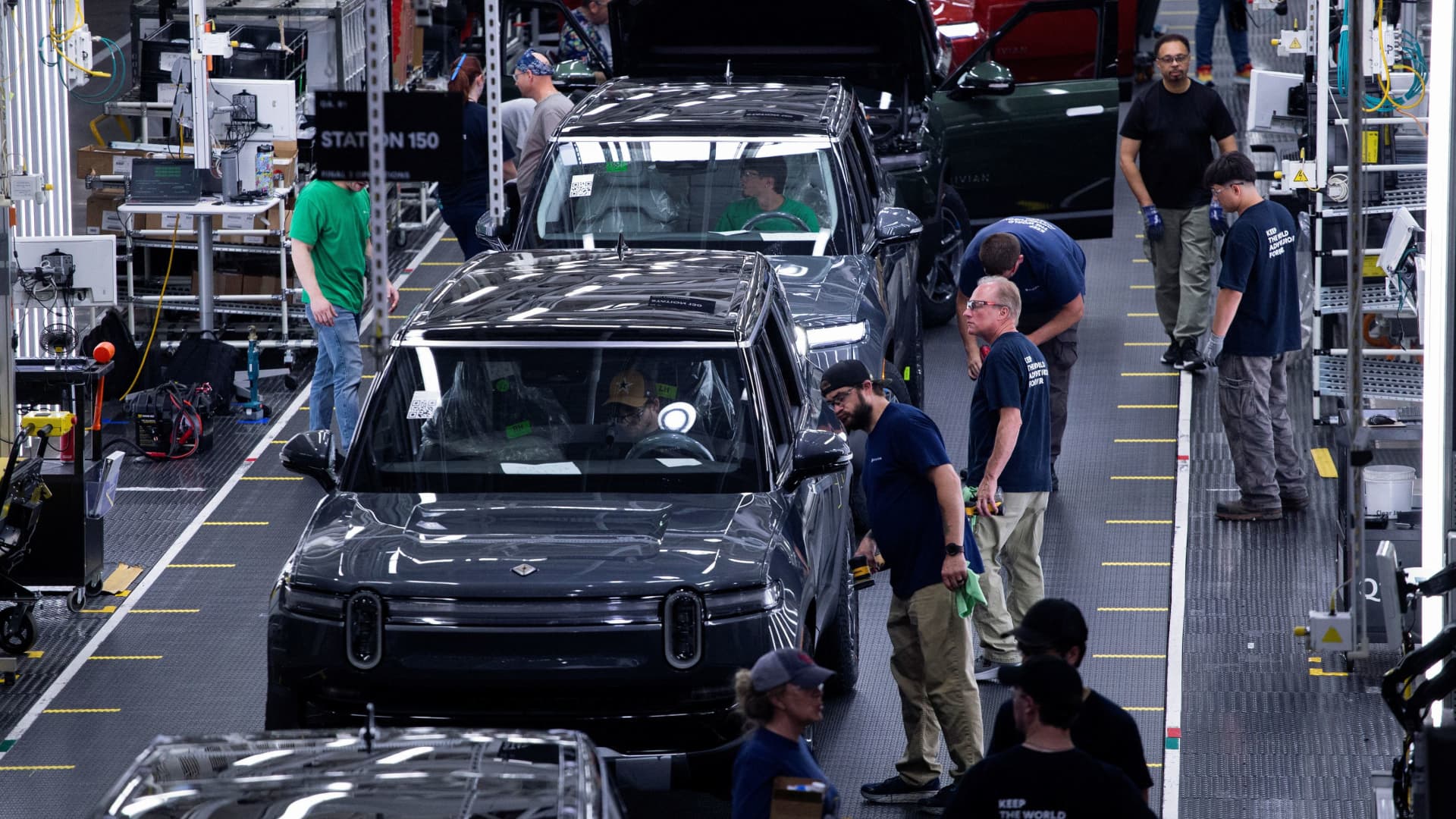Workers assemble second-generation R1 vehicles at electric auto maker Rivian’s manufacturing facility in Normal, Illinois, U.S. June 21, 2024.
Joel Angel Juarez | Reuters
U.S. factories remained in slowdown mode in August, fueling fears about where the economy is headed, according to separate manufacturing gauges.
The Institute for Supply Management monthly survey of purchasing managers showed that just 47.2% reported expansion during the month, below the 50% breakeven point for activity.
Though that was slightly above the 46.8% recorded for July, it was below the Dow Jones consensus call for 47.9%.
“While still in contraction territory, U.S. manufacturing activity contracted slower compared to last month. Demand continues to be weak, output declined, and inputs stayed accommodative,” said Timothy Fiore, chair of the ISM Manufacturing Business Survey Committee.
“Demand remains subdued, as companies show an unwillingness to invest in capital and inventory due to current federal monetary policy and election uncertainty,” he added.
While the index level suggests contraction in the manufacturing sector, Fiore pointed out that any reading above 42.5% generally points to expansion across the broader economy.
It was a weaker-than-expected reading last month that sent markets further into a tailspin, ultimately costing the S&P 500 about 8.5% before recovering most of the losses. Stocks added to declines following the latest ISM release on Tuesday, with the Dow Jones Industrial Average off nearly 500 points.
Another weak economic reading raises the probability the Federal Reserve will be cutting interest rates by at least a quarter percentage point later this month. Following the ISM report, traders raised the odds of a more aggressive half-point reduction to 39%, according to the CME Group’s FedWatch measure.
With the survey, the employment index edged higher to 46% while inventories jumped to 50.3%. Regarding inflation, the prices index nudged higher to 54%, possibly giving the Fed some pause when deciding on the extent of the fully priced-in rate cut.
The ISM results were backed up by another PMI reading from S&P, which showed a decrease to 47.9 in August from 49.6 in July.
The S&P employment index showed a decline for the first time this year, while the input cost measure climbed to a 16-month high, another sign that inflation remains present if well off its mid-2022 highs.
“A further downward lurch in the PMI points to the manufacturing sector acting as an increased drag on the economy midway through the third quarter. Forward-looking indicators suggest this drag could intensify in the coming months,” said Chris Williamson, chief business economist at S&P Global Market Intelligence.















